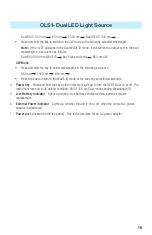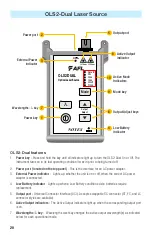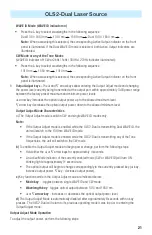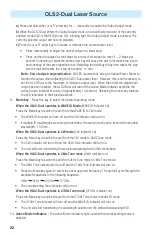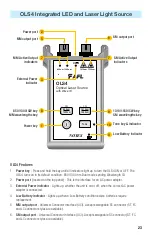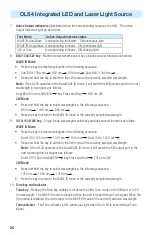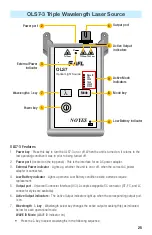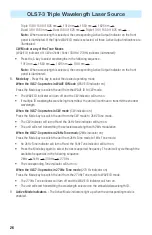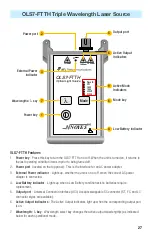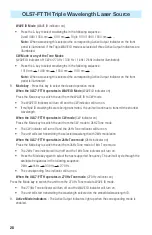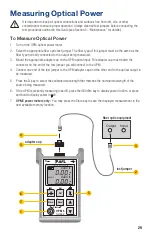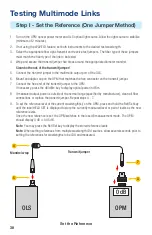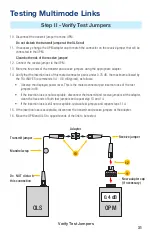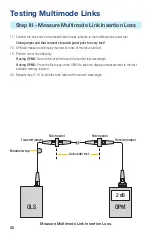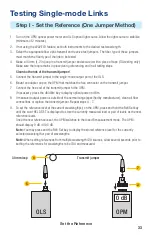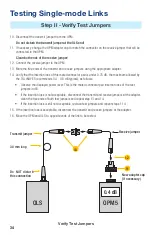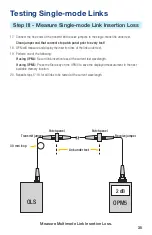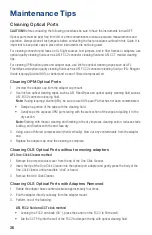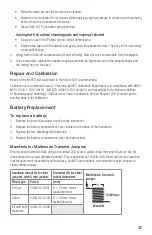
33
1. Turn on the OPM optical power meter and OLS optical light source. Allow the light source to stabilize
(minimum of 2 minutes).
2. If not using the WAVE ID feature, set both instruments to the desired test wavelength.
3. Select the appropriate fiber optic transmit and receive test jumpers. The fiber type of these jumpers
must match the fiber type of the link to be tested.
4. Make a 30 mm (1.2 in) loop in a transmit jumper and secure it with a piece of tape (TIA testing only).
Make sure the loop remains in place during referencing and in all testing steps.
Clean both ends of the transmit jumper!
5. Connect the transmit jumper to the single-mode output port of the OLS.
6. Mount an adapter cap on the OPM that matches the free connector on the transmit jumper.
7. Connect the free end of the transmit jumper to the OPM.
If necessary, press the dB/dBm key to display optical power in dBm.
8. If measured output power is outside of the normal range (specified by manufacturer), clean all fiber
connections or replace the transmit jumper. Repeat steps 4 - 7.
9. To set the reference level at the current wavelength(s): on the OPM, press and hold the Ref/Set key
until the word HELD SET is displayed to store the currently measured level or pair of levels as the new
reference levels.
Once the new reference is set, the OPM switches to the loss dB measurement mode. The OPM
should display 0 dB ±0.05 dB.
Note:
You may press and the Ref/ Set key to display the stored reference level for the currently
selected wavelength or pair of wavelengths.
Note:
When setting references from multiple wavelength ID’d sources, allow several seconds prior to
setting the references for wavelengths to be ID’d and measured.
Set the Reference
Testing Single-mode Links
Step I - Set the Reference (One Jumper Method)
Transmit jumper
OLS
OPM
0 dB
5
7
6
30 mm loop
4

